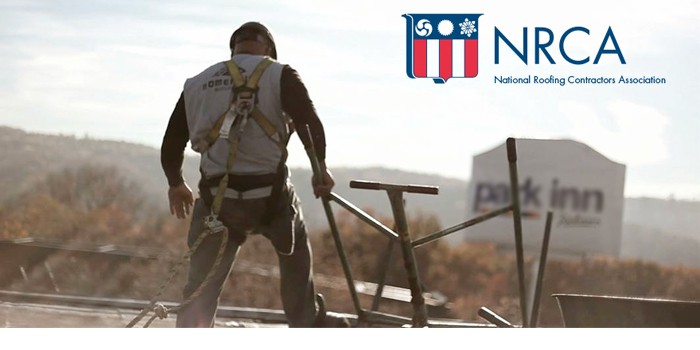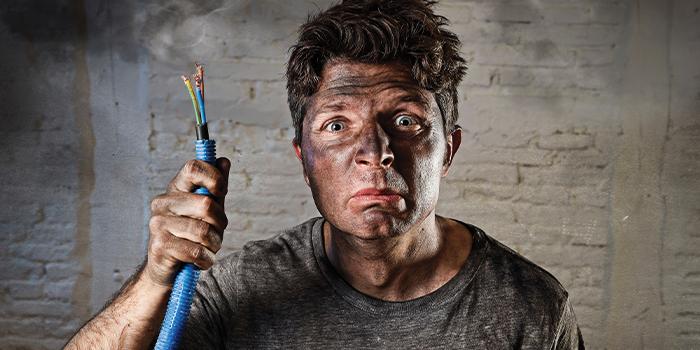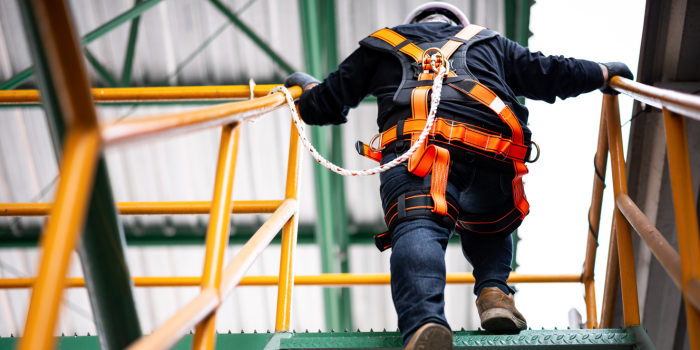
NRCA Responds to OSHA Plan to Impose Federal Rules on State-administered Safety and Health Agencies
ROSEMONT, IL – March 30, 2016 – The Occupational Safety and Health Administration (OSHA) has demanded some states that administer their own occupational safety and health agencies and enforce state-specific workplace rules adopt federal provisions related to residential fall protection. California, Kentucky, Oregon and Washington are four such states with provisions for residential fall protection that differ from federal OSHA's.
One of the federal requirements is that fall protection is required in roofing work at heights of six feet or greater. OSHA has singled out this requirement as one that the states must meet or OSHA will take over enforcement of all construction workplace rules.
Government statistics indicate state plan states that use a risk-based approach, where roof height is one of many factors considered when developing regulations, generally experience lower worker death and injury rates than comparable federal states.
The recent release of initial workplace fatality numbers by the Bureau of Labor Statistics for 2014 has again brought the issue to the forefront and prompted the following Jan. 29, 2016, response from NRCA CEO Bill Good to Dean McKenzie, OSHA's acting director of directorate of construction.
Dear Mr. McKenzie:
We are, of course, incredibly disappointed that you choose to carry on with your plan to impose federal rules, developed over the objections of the roofing industry, on states that have had considerable success with their own fall protection regulations. Those regulations have been developed, for the most part, with the active involvement of health and safety agencies, management and labor in the affected states. What's more, in most of the states you cite as being deficient in meeting the federal "effectiveness" standard, the rate of accidents and fatalities from falls in construction is consistently better than it is in comparable states under federal OSHA's jurisdiction.
And what's even more incredible is that since federal OSHA unilaterally changed the rules for residential fall protection, the number of fatal falls has actually increased. OSHA's promise that the cancellation of STD 3.1 in 2010 would make roofing workers safer has delivered the opposite result with 61 roofing workers killed by falls in 2012, 66 in 2013 and 69 in 2014. And yet OSHA marches on, unaffected by the facts.
How you can consistently ignore the data and instead rely on a vague definition of "effectiveness" is frankly beyond me, and makes absolutely no sense. It seems to me that an effective safety standard is one that actually works to protect workers from falls, rather than one that meets certain regulatory language.
In your letter you cite "standards that permit, for example, certain work to be performed at heights of 15 to 20 feet without positive fall protection." As we have argued previously, the height of the roof is not the only issue that needs to be considered for effective fall protection. Rather, job-specific fall-protection assessment should take into account the type of building, the slope of the roof and the type of roofing materials being installed. This strikes me as being remarkably similar to the approach to safety Dr. Michaels, among others, has long advocated, but this approach is missing from OSHA's heavy-handed efforts to impose federal rules on states.
In addition, if height were indeed the only issue, then perhaps you can explain why certain scaffolding operations are allowed up to 10 feet without fall protection, and why certain steel erection activities are allowed up to 30 feet without fall protection. And perhaps you can also explain why, over the period from 2010 to 2013, Texas had an average fatal construction fatality rate of 11.63, while California's was 5.95.
The tragedy, of course, is that this isn't just an academic conversation. Lives are at stake, and more are being lost in those states OSHA is responsible for than in those that have developed workable and, yes, effective, regulations.
I understand you choose not to meet with us to discuss this further. While I'm not surprised, I am left to wonder what is reasonably to be done to make roofing jobs safer. OSHA's approach has made things worse, and you seem intent on just doing more of the same.
Sincerely,

William A. Good, CAE
Chief Executive Officer













